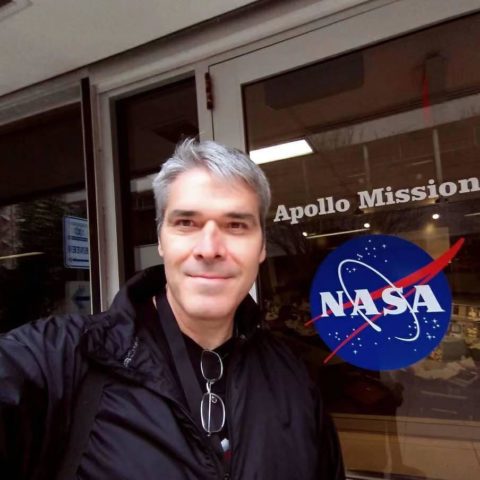Many young Costa Ricans dream of working for NASA but they may be unaware that it is possible to do it from Costa Rica. In today’s blog I interview Dr. Jorge Andres Diaz Diaz who is Head of the GasLab, one of the labs of the Atomic, Nuclear and Molecular Sciences Research Center at the University of Costa Rica. Jorge is also a physics professor at the University of Costa Rica and has collaborated on NASA projects for more than 20 years. In August 2019, he began working as a contractor for NASA’s Mass Spectrometer Observing Lunar Operations project which is part of the Artemis program. With Artemis, NASA hopes to land the first woman and next man on the Moon by 2024, in preparation to sending astronauts to Mars.
In this interview Jorge tells us about the fascinating Ticosonde program, one of the longest active projects and collaborations between NASA and Costa Rica. Now in its 15th year, Ticosonde payloads have been launched weekly from the University of Costa Rica’s GasLab to measure ozone and water vapor from the surface to the middle stratosphere above Costa Rica. The data support validation of retrievals from a number of space-based instruments including aboard the International Space Station. Have you ever seen a UFO in the skies above San Jose? It might have been a Ticosonde balloon as Jorge explains in the interview
Please tell us about yourself and your role in the Ticosonde program
I’m a professor at the Physics School of the University of Costa Rica (UCR) and Head of the GasLab, one of the labs belonging to the Atomic, Nuclear and Molecular Sciences Research Center (CICANUM) in Costa Rica. I did my Ph.D. in Experimental Physics (sensors and instrumentation) at the University of Minnesota and for more than 20 years I have been collaborating on various NASA projects including TicoSonde. I’m a co-investigator in the project and my role is the Point of Contact (POC) for all Costa Rica activities for TicoSonde.Every week I coordinate the logistics and staff for measuring the ozone and water vapor concentration profile in the tropical atmosphere using sondes launched by balloons. We are one of the few locations worldwide in the tropics in which such measurements are carried out and we have more than 15 years of taking weekly recordings, making the TicoSonde data set very unique.
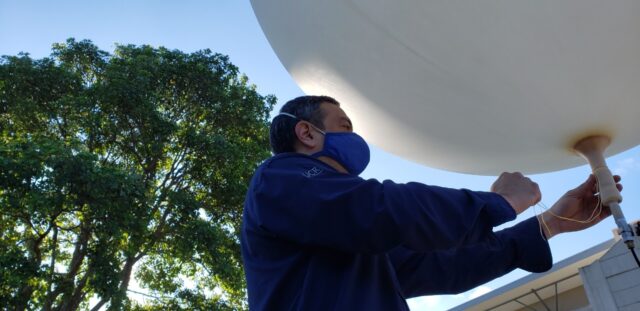
How is the program organized?
Each participating institution funds its own researcher. NASA provides the sondes and supplies and carries the data analysis and intercomparison together with other institutions and Costa Rica provides the launch site and balloon launch activities.
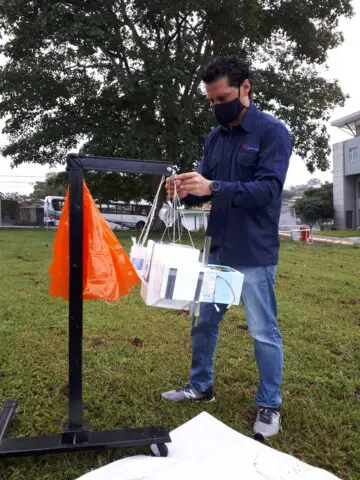
What is the connection between NASA’s Earth Science Division and Ticosonde?
NASA Earth Science Division (ESD) is the main sponsor of the TicoSonde Project, together with UCR, NOAA, USRA, NCAR, and other US institutions. Our data helps to monitor the ozone layer in the tropical regions, validate satellite-based measurements of different space-borne remote sensing instruments including sensors onboard the International Space Station. The in-situ data in combination with many other sites helps to understand the interaction between stratospheric water vapor and other trace gases with global circulation, global heating,and long term climate change monitoring and modeling, which is one of the focuses of NASA’s Earth Science Division.
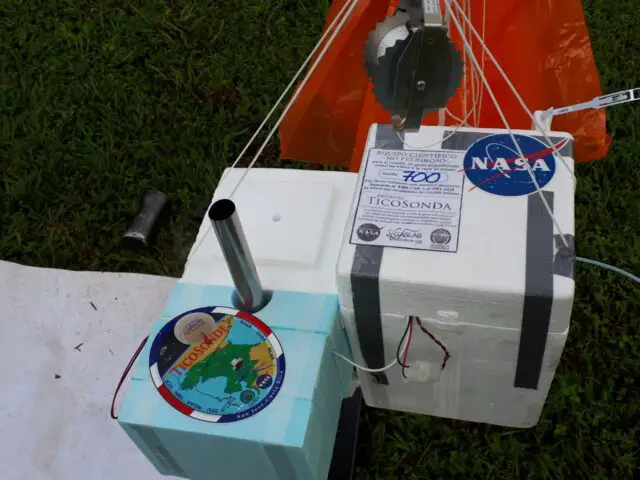
How is the program organized?
Each participating institution funds its own researcher. NASA provides the sondes and supplies and carries the data analysis and intercomparison together with other institutions and Costa Rica provides the launch site and balloon launch activities.
.
What is the connection between NASA’s Earth Science Division and Ticosonde?
NASA Earth Science Division (ESD) is the main sponsor of the TicoSonde Project, together with UCR, NOAA, USRA, NCAR, and other US institutions. Our data helps to monitor the ozone layer in the tropical regions, validate satellite-based measurements of different space-borne remote sensing instruments including sensors onboard the International Space Station. The in-situ data in combination with many other sites helps to understand the interaction between stratospheric water vapor and other trace gases with global circulation, global heating,and long term climate change monitoring and modeling, which is one of the focuses of NASA’s Earth Science Division.
What have been some of the main achievements of the Ticosonde program?
● 15 yrs of continuous data monitoring of the tropical atmosphere with weekly atmospheric sounding profiles up to 32 km measuring temperature, pressure, relative humidity, wind velocity, ozone concentration, water vapor concentration in some locations when the wind is right and sulfur dioxide concentration of volcanic plumes.
● One of the longest active projects and collaborations between NASA and Costa Rica.
● Validation of space-borne remote sensors including OMI, TROPOMI, SAGE III instruments among others.
Can you share a fun or unusual anecdote about an experience you had with the program?
On one launch, the sonde returned to Earth just 1 km away from the Presidential Palace, and it ended up on the highway with the box with the sondes on one side and the exploded balloon (it always explodes around 32km due to the inside pressure of the helium that lifts the ballon) with a long rope connecting to the payload on the other side of the road. People thought it was a bomb, so it triggered a national emergency response closing all roads and the bomb squad was called to deactivate the sonde by blowing up the box. On each box we put the description of the sonde indicating it is a research instrument with a NASA and UCR logo and my phone number. So after they blew up the box, by some miracle the label was still readable and they called me apologizing for blowing up my sonde.
Another time, the sonde came down exactly in the middle of the International airport, so the Control Tower closed the airspace for 2 hours until they could remove the sonde and balloon from the landing strip, and they called me also, to ask not to do it again. Now we have a protocol so this can be avoided or at least minimized ( I can’t really avoid it as itdepends on the winds).
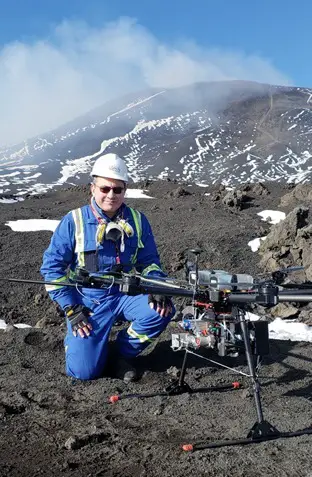
One summer we had an intense campaign launching 4 radiosondes per day for more than a month (every 6 hrs) but after a week, people started calling the news media saying that they were seeing UFOs many times a day and a collective hysteria blew up in social media. We ended up doing a small interview on a TV news channel in order to explain to the public that there weren’t any UFOs, but research balloons that were part of an international campaign with NASA.
Bruce Callow is a Canadian teacher and co-author of the book To the Stars: Costa Rica in NASA. He does space education outreach work on behalf of NASA.



